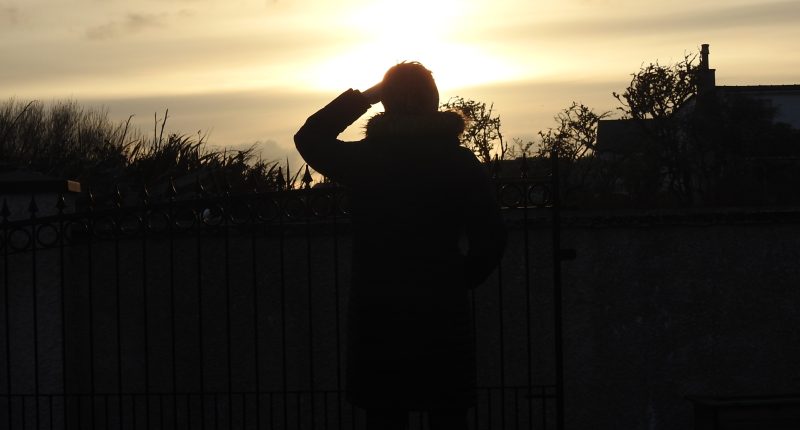THE solar eclipse proved to be a total let down for stargazers in the UK – thanks to the British weather.
Cloudy conditions meant the view was marred for millions, while those in the US were left starry-eyed.
In England the partial solar eclipse started at 7.54pm and lasted until 8.06pm.
While Scots were able to view it two minutes earlier, lasting until 8.51pm.
Those in Northern Ireland were able to see it from 7.54pm but lasted until 8.21pm.
Those in Wales could see it from 7.55pm, lasting less than 10 minutes though, until 8.04pm.
Read More on the Solar Eclipse
Skygazers in the US, Canada and Mexico though got to glimpse a rare total solar eclipse, where the moon blocks the sun from view causing almost four-and-a-half minutes of complete darkness.
But things on this side of the pond weren’t quite so dramatic.
A less dramatic partial eclipse appeared over some parts of the UK and Ireland.
How much of the Sun will be covered?

UK
- Stornoway: 22.5%
- Inverness: 16%
- Edinburgh: 6.1%
- Glasgow: 11.2%
- Belfast: 17.2%
- Liverpool: 0.64%
- Manchester: 0.82%
Ireland
- Dublin: 15.4%
- Galway: 34.5%
- Cork: 19.5%
- Limerick: 20%
Data according to Royal Astronomical Society
But the British weather dampened any excitement as cloud and rain in several key viewing points spoiled the spectacle.
Most read in Science
Stornoway was the best place in the UK to see an eclipse of the sun.
People in parts of the UK were able to see a partial solar eclipse, as the final moments of the total eclipse in North America were visible.
And in Stornoway there was a 33.7 per cent maximum coverage at 8.13pm.
However it was behind light clouds close to the horizon in many places in the Outer Hebridean town.
A small segment of the sun was blocked out by the moon – visible close to sunset.
The cosmic event plunged much of North America into darkness, turning the day skies into night.
A total solar eclipse happens when the moon completely covers the sun, and observers are within the darkest part of its shadow.
Areas covered by partial shade witness a partial eclipse, and this is what some sky-gazers might have seen in the UK tonight, depending on cloud cover.
Total solar eclipses occur every 18 months but the visibility path of seeing the full total eclipse is only around 80 miles, so if you are not located within that track it will not be visible.
Experts have warned that even a partial eclipse can still damage your eyes.
Dr Robert Massey from the Royal Astronomical Society said: “During the partial phase of the eclipse it’s incredibly important because the sun remains extremely bright.
“Even when you’ve got a thin crescent left, it’s still easy enough to damage your eyes.
“Instead, what you need to do is either go to a public event where amateur astronomers might be projecting an image of the Sun you can look at, or if you can get hold of certified, proper, good-standard eclipse shades – you can buy them online – they block out most of the harmful light from the sun.”
Nasa has also warned that merely trying to photograph the sun can damage your smartphone too.
For Brits there is a second chance to catch a partial eclipse which is only a year away.
In March 2025, between 30 and 40 per cent of the sun’s rays are predicted to be blocked.
Sadly, there aren’t any rare total eclipses visible from the UK anytime soon though, with the next expected all the way in 2090 – the last time it happened was in 1999.
Scientists with Aberystwyth University in Wales and from Nasa are hoping from today’s event for an insight into solar wind, which is the plasma thrown from the Sun’s surface.
Another puzzle is why the corona seems to be much hotter than the Sun’s surface, despite being on its edge.
They might even see what is called a coronal mass ejection, when huge plasma clouds are thrown from the atmosphere into Space.
READ MORE SUN STORIES
Ejections can cause problems for satellites we use on Earth.
A lot of money, time and logistics have gone into that four-minute window, says Huw Morgan, professor of Physics at Aberystwyth University.
Find out more about science
Want to know more about the weird and wonderful world of science? From the Moon to the human body, we have you covered…














